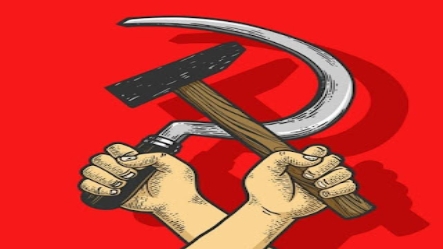Khoa Học Thực Nghiệm & Tâm Linh
Tại sao đàn chim bay theo đội hình chữ V
Từ lâu người ta đã dự đoán rằng các con chim bay theo đội hình chữ V là để không lạc nhau và bớt tốn năng lực nhưng đến nay mới có thể kiểm chứng qua thực nghiệm

 Theo lời một chuyên gia thì chỉ riêng việc thu thập được những dữ kiện như thế
cũng đã là một công trình và thành tích đáng kể.
Theo lời một chuyên gia thì chỉ riêng việc thu thập được những dữ kiện như thế
cũng đã là một công trình và thành tích đáng kể.
 Những con chim như là loài cò ‘ibises’ áp dụng luật khí động học khi bay. Lợi
dụng luồng không khí chuyển động đi lên từ con chim dẫn đầu, con sau bay theo ở
phía bên cạnh và hưởng được một phần sức nâng giúp bớt phải dùng nhiều sức lực.
Cứ như vậy nối tiếp nhau chúng sẽ tạo thành một đội hình chữ V.
Những con chim như là loài cò ‘ibises’ áp dụng luật khí động học khi bay. Lợi
dụng luồng không khí chuyển động đi lên từ con chim dẫn đầu, con sau bay theo ở
phía bên cạnh và hưởng được một phần sức nâng giúp bớt phải dùng nhiều sức lực.
Cứ như vậy nối tiếp nhau chúng sẽ tạo thành một đội hình chữ V.
 Nghiên cứu các dữ kiện chi tiết, người ta nhận ra loài chim biết cách tìm vị
trí tối ưu để hưởng sức nâng, và vỗ cánh đồng bộ để giảm bớt năng lượng cần
thiết. Bằng thiên khiếu bẩm sinh ấy, chúng đồng thời cũng tránh được tác động
của những không khí đi xuống do luồng bay của đồng đội phía trước.
Nghiên cứu các dữ kiện chi tiết, người ta nhận ra loài chim biết cách tìm vị
trí tối ưu để hưởng sức nâng, và vỗ cánh đồng bộ để giảm bớt năng lượng cần
thiết. Bằng thiên khiếu bẩm sinh ấy, chúng đồng thời cũng tránh được tác động
của những không khí đi xuống do luồng bay của đồng đội phía trước.
 This
story has been provided by AAAS, the non-profit science society, and its
international journal, Science.
This
story has been provided by AAAS, the non-profit science society, and its
international journal, Science.
http://baomai.blogspot.com/2014/02/tai-sao-chim-bay-theo-oi-hinh-chu-v.html
Bao Mai gửi đến HNPD

Từ
lâu người ta đã dự đoán rằng các con chim bay theo đội hình chữ V là để không
lạc nhau và bớt tốn năng lực nhưng đến nay mới có thể kiểm chứng qua thực
nghiệm.
Trong một bài trên tạp chí
khoa học Nature số ra ngày 15 tháng 1, 2014, các nhà nghiên cứu cho biết kết
quả tìm được qua sự theo dõi một nhóm cò đen đầu hói, mỗi con có gắn một
dụng cụ GPS nhỏ để xác định vị trí và động tác vỗ cánh.



Here's
Why Birds Fly In A 'V' Formation

Anyone
watching the autumn sky knows that migrating birds fly in a V formation, but
scientists have long debated why. A new study of ibises finds that these
big-winged birds carefully position their wingtips and sync their flapping,
presumably to catch the preceding bird’s updraft—and save energy during flight.
There
are two reasons birds might fly in a V formation: It may make flight easier, or
they’re simply following the leader. Squadrons of planes can save fuel by
flying in a V formation, and many scientists suspect that migrating birds do
the same. Models that treated flapping birds like fixed-wing airplanes estimate
that they save energy by drafting off each other, but currents created by
airplanes are far more stable than the oscillating eddies coming off of a bird.
“Air gets pretty darn wiggy behind a flapping wing,” says James Usherwood, a
locomotor biomechanist at the Royal Veterinary College
at the University
of London in Hatfield,
where the research took place.
The
study, published online today in Nature, took advantage of an existing
project to reintroduce endangered northern bald ibises (Geronticus eremita) to Europe. Scientists used a microlight plane to show
hand-raised birds their ancestral migration route from Austria to Italy. A flock of 14 juveniles
carried data loggers specially built by Usherwood and his lab. The device’s GPS
determined each bird’s flight position to within 30 cm, and an accelerometer
showed the timing of the wing flaps.
Just
as aerodynamic estimates would predict, the birds positioned themselves to
fly just behind and to the side of the bird in front, timing their wing beats
to catch the uplifting eddies. When a bird flew directly behind another, the
timing of the flapping reversed so that it could minimize the effects of the
downdraft coming off the back of the bird’s body. “We didn’t think this was
possible,” Usherwood says, considering that the feat requires careful flight
and incredible awareness of one’s neighbors. “Perhaps these big V formation
birds can be thought of quite like an airplane with wings that go up and down.”
The
findings likely apply to other long-winged birds, such as pelicans, storks, and
geese, Usherwood says. Smaller birds create more complex wakes that would make
drafting too difficult. The researchers did not attempt to calculate the bird’s
energy savings because the necessary physiological measurements would be too
invasive for an endangered species. Previous studies estimate that birds can
use 20% to 30% less energy while flying in a V.
“From
a behavioral perspective it’s really a breakthrough,” says David Lentink, a
mechanical engineer at Stanford University in Palo
Alto, California, who
was not involved in the work. “Showing that birds care about syncing their wing
beats is definitely an important insight that we didn’t have before.” To
definitively say that the birds are drafting off each other, however, the exact
location of the eddies and the areas of downdraft would need to be measured on
ibises, which would require flying them in a wind tunnel—a far more intrusive
process than simply carrying a data logger.
Scientists
do not know how the birds find that aerodynamic sweet spot, but they suspect
that the animals align themselves either by sight or by sensing air currents
through their feathers. Alternatively, they may move around until they find the
location with the least resistance. In future studies, the researchers will
switch to more common birds, such as pigeons or geese. They plan to investigate
how the animals decide who sets the course and the pace, and whether a mistake
made by the leader can ripple through the rest of the flock to cause traffic
jams.
“It’s
a pretty impressive piece of work as it is, but it does suggest that there’s a
lot more to learn,” says Ty Hedrick, a biologist at the University of North
Carolina, Chapel Hill, who studies flight aerodynamics in birds and insects.
However they do it, he says, “birds are awfully good hang-glider pilots.”
http://baomai.blogspot.com/2014/02/tai-sao-chim-bay-theo-oi-hinh-chu-v.html
Bao Mai gửi đến HNPD
Bàn ra tán vào (0)
Các tin đã đăng
- "Sinh thái học dưới góc nhìn của Tam giáo" - Gs Thái Công Tụng / Trần Văn Giang (ghi lại)
- Chuyện Ukraine : Mặt trận không tiếng súng Cyberwar (Chiến tranh mạng) – Trần Lý ( TVQ chuyển )
- Tàu thăm dò Perseverance hạ cánh sao Hỏa sau '7 phút kinh hoàng'
- Các nhà nghiên cứu tìm ra công nghệ mới cho phép sạc điện thoại thông qua sóng Wi-Fi
- Các nhà nghiên cứu tìm ra công nghệ mới cho phép sạc điện thoại thông qua sóng Wi-Fi
Tại sao đàn chim bay theo đội hình chữ V
Từ lâu người ta đã dự đoán rằng các con chim bay theo đội hình chữ V là để không lạc nhau và bớt tốn năng lực nhưng đến nay mới có thể kiểm chứng qua thực nghiệm

Từ
lâu người ta đã dự đoán rằng các con chim bay theo đội hình chữ V là để không
lạc nhau và bớt tốn năng lực nhưng đến nay mới có thể kiểm chứng qua thực
nghiệm.
Trong một bài trên tạp chí
khoa học Nature số ra ngày 15 tháng 1, 2014, các nhà nghiên cứu cho biết kết
quả tìm được qua sự theo dõi một nhóm cò đen đầu hói, mỗi con có gắn một
dụng cụ GPS nhỏ để xác định vị trí và động tác vỗ cánh.



Here's
Why Birds Fly In A 'V' Formation

Anyone
watching the autumn sky knows that migrating birds fly in a V formation, but
scientists have long debated why. A new study of ibises finds that these
big-winged birds carefully position their wingtips and sync their flapping,
presumably to catch the preceding bird’s updraft—and save energy during flight.
There
are two reasons birds might fly in a V formation: It may make flight easier, or
they’re simply following the leader. Squadrons of planes can save fuel by
flying in a V formation, and many scientists suspect that migrating birds do
the same. Models that treated flapping birds like fixed-wing airplanes estimate
that they save energy by drafting off each other, but currents created by
airplanes are far more stable than the oscillating eddies coming off of a bird.
“Air gets pretty darn wiggy behind a flapping wing,” says James Usherwood, a
locomotor biomechanist at the Royal Veterinary College
at the University
of London in Hatfield,
where the research took place.
The
study, published online today in Nature, took advantage of an existing
project to reintroduce endangered northern bald ibises (Geronticus eremita) to Europe. Scientists used a microlight plane to show
hand-raised birds their ancestral migration route from Austria to Italy. A flock of 14 juveniles
carried data loggers specially built by Usherwood and his lab. The device’s GPS
determined each bird’s flight position to within 30 cm, and an accelerometer
showed the timing of the wing flaps.
Just
as aerodynamic estimates would predict, the birds positioned themselves to
fly just behind and to the side of the bird in front, timing their wing beats
to catch the uplifting eddies. When a bird flew directly behind another, the
timing of the flapping reversed so that it could minimize the effects of the
downdraft coming off the back of the bird’s body. “We didn’t think this was
possible,” Usherwood says, considering that the feat requires careful flight
and incredible awareness of one’s neighbors. “Perhaps these big V formation
birds can be thought of quite like an airplane with wings that go up and down.”
The
findings likely apply to other long-winged birds, such as pelicans, storks, and
geese, Usherwood says. Smaller birds create more complex wakes that would make
drafting too difficult. The researchers did not attempt to calculate the bird’s
energy savings because the necessary physiological measurements would be too
invasive for an endangered species. Previous studies estimate that birds can
use 20% to 30% less energy while flying in a V.
“From
a behavioral perspective it’s really a breakthrough,” says David Lentink, a
mechanical engineer at Stanford University in Palo
Alto, California, who
was not involved in the work. “Showing that birds care about syncing their wing
beats is definitely an important insight that we didn’t have before.” To
definitively say that the birds are drafting off each other, however, the exact
location of the eddies and the areas of downdraft would need to be measured on
ibises, which would require flying them in a wind tunnel—a far more intrusive
process than simply carrying a data logger.
Scientists
do not know how the birds find that aerodynamic sweet spot, but they suspect
that the animals align themselves either by sight or by sensing air currents
through their feathers. Alternatively, they may move around until they find the
location with the least resistance. In future studies, the researchers will
switch to more common birds, such as pigeons or geese. They plan to investigate
how the animals decide who sets the course and the pace, and whether a mistake
made by the leader can ripple through the rest of the flock to cause traffic
jams.
“It’s
a pretty impressive piece of work as it is, but it does suggest that there’s a
lot more to learn,” says Ty Hedrick, a biologist at the University of North
Carolina, Chapel Hill, who studies flight aerodynamics in birds and insects.
However they do it, he says, “birds are awfully good hang-glider pilots.”
http://baomai.blogspot.com/2014/02/tai-sao-chim-bay-theo-oi-hinh-chu-v.html
Bao Mai gửi đến HNPD



















